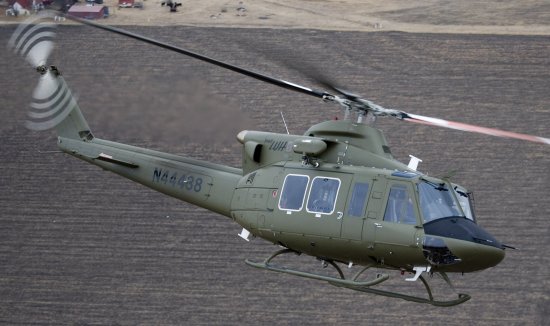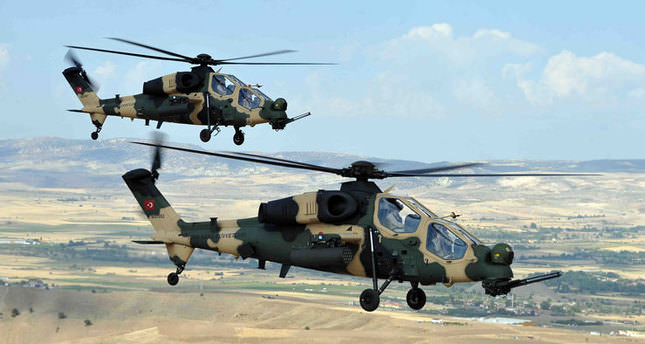New Sight for Apache
http://www.orlandosentinel.com/business/os-cfb-tech-lockheed-0203-20140202,0,1893546.story
Using a bit of creative engineering, Lockheed Martin Corp.'s Orlando missiles unit has come up with a color surveillance system for the U.S. Army's Apache helicopter.
The latest advance in the Apache's piloting and weapons system brings high-resolution "color to the cockpit," replacing the Apache's longtime black-and-white camera and display, according to Lockheed Martin Missiles & Fire Control.
Hundreds of jobs are tied to Apache work in Orlando, where Lockheed Missiles employs more than 4,000.
Lockheed calls the color-camera technology a "game changer" for the Apache. The new system performs visually detailed battlefield surveillance and provides tactical superiority in the air and on the ground, company officials say.
When the system rolls out later this month, Apache will become the first military helicopter to use a high-definition color camera, Lockheed said. The Navy's Cobra chopper already uses a color camera, but it is less advanced than Lockheed's, the company said.
Lockheed has posted a YouTube video showing the "before and after" difference of using color imagery below:
The color camera is part of an overall modernization of the Apache's Target Acquisition, Designation Sight/Pilot Night Vision Sensor, also known as Arrowhead. The advances also include new infrared-imaging navigation, laser designation and weapons-guidance equipment.
"The fully modernized M-TADS/PNVS will significantly enhance situational awareness for the Apache crews, and be a decisive factor in the successful execution of their missions," said Matt Hoffman, Lockheed's director of the Apache weapons-system work, in a prepared statement.
Imagery helps ID key details
Military aviation expert Dan Macchiarella, a professor at Embry-Riddle Aeronautical University, said the addition of color-camera tech to the Apache cockpit is a significant development.
For decades, pilots and gunners have missed the benefits of full-color display as they relied more and more on infrared-imaging tech for night-vision and weapons-guidance capabilities, said the former Apache pilot. Often in the past, infrared images lacked enough resolution to identify critical details, like friendly versus enemy forces, he said.
"This initiative to modernize Apache puts the color back on the screen," Macchiarella said. "The images are clear, very clear, and clear is good, especially when it comes to the battlefield."
Lockheed Missiles received two Army contracts worth a combined $161.7 million last year to produce the color-camera systems and related upgrades.
The contracts support Lockheed's work in Orlando and Ocala through the third quarter of 2016, company officials said.
Lockheed sets goals for 2014
Lockheed listed its rollout of the new Apache system as one of the key milestones for its Orlando operations this year. Among its other goals:
•Flight-testing the air- and surface-launched versions of a potentially lucrative program called the Long Range Anti-Ship Missile, an advanced cruise missile for the Navy and Air Force.
•Continuing development of technology for the Joint Air-to-Ground Missile, with an eye to future contract competitions.
•Providing training and logistics systems for a new F-35 pilot training center in Marine Corps Air Station Beaufort, South Carolina.
•Expanding its weapons sales to U.S. allies – already a multibillion-dollar market for its missiles and simulation training equipment.
"We see a strong international market for Central Florida Lockheed Martin programs," the company said in a statement. "We expect to secure additional orders for our tactical missile and sensor systems products in 2014, with a large share of the development and production work occurring at the Missiles and Fire Control facility in Orlando.
"Our U.S. and international customers are also finding value in simulation to meet budget challenges, and Lockheed Martin is continuing to develop new technologies that increase the realism and effectiveness of simulation for training," the company said.
The latest advance in the Apache's piloting and weapons system brings high-resolution "color to the cockpit," replacing the Apache's longtime black-and-white camera and display, according to Lockheed Martin Missiles & Fire Control.
Hundreds of jobs are tied to Apache work in Orlando, where Lockheed Missiles employs more than 4,000.
Lockheed calls the color-camera technology a "game changer" for the Apache. The new system performs visually detailed battlefield surveillance and provides tactical superiority in the air and on the ground, company officials say.
When the system rolls out later this month, Apache will become the first military helicopter to use a high-definition color camera, Lockheed said. The Navy's Cobra chopper already uses a color camera, but it is less advanced than Lockheed's, the company said.
Lockheed has posted a YouTube video showing the "before and after" difference of using color imagery below:
The color camera is part of an overall modernization of the Apache's Target Acquisition, Designation Sight/Pilot Night Vision Sensor, also known as Arrowhead. The advances also include new infrared-imaging navigation, laser designation and weapons-guidance equipment.
"The fully modernized M-TADS/PNVS will significantly enhance situational awareness for the Apache crews, and be a decisive factor in the successful execution of their missions," said Matt Hoffman, Lockheed's director of the Apache weapons-system work, in a prepared statement.
Imagery helps ID key details
Military aviation expert Dan Macchiarella, a professor at Embry-Riddle Aeronautical University, said the addition of color-camera tech to the Apache cockpit is a significant development.
For decades, pilots and gunners have missed the benefits of full-color display as they relied more and more on infrared-imaging tech for night-vision and weapons-guidance capabilities, said the former Apache pilot. Often in the past, infrared images lacked enough resolution to identify critical details, like friendly versus enemy forces, he said.
"This initiative to modernize Apache puts the color back on the screen," Macchiarella said. "The images are clear, very clear, and clear is good, especially when it comes to the battlefield."
Lockheed Missiles received two Army contracts worth a combined $161.7 million last year to produce the color-camera systems and related upgrades.
The contracts support Lockheed's work in Orlando and Ocala through the third quarter of 2016, company officials said.
Lockheed sets goals for 2014
Lockheed listed its rollout of the new Apache system as one of the key milestones for its Orlando operations this year. Among its other goals:
•Flight-testing the air- and surface-launched versions of a potentially lucrative program called the Long Range Anti-Ship Missile, an advanced cruise missile for the Navy and Air Force.
•Continuing development of technology for the Joint Air-to-Ground Missile, with an eye to future contract competitions.
•Providing training and logistics systems for a new F-35 pilot training center in Marine Corps Air Station Beaufort, South Carolina.
•Expanding its weapons sales to U.S. allies – already a multibillion-dollar market for its missiles and simulation training equipment.
"We see a strong international market for Central Florida Lockheed Martin programs," the company said in a statement. "We expect to secure additional orders for our tactical missile and sensor systems products in 2014, with a large share of the development and production work occurring at the Missiles and Fire Control facility in Orlando.
"Our U.S. and international customers are also finding value in simulation to meet budget challenges, and Lockheed Martin is continuing to develop new technologies that increase the realism and effectiveness of simulation for training," the company said.
















Comment